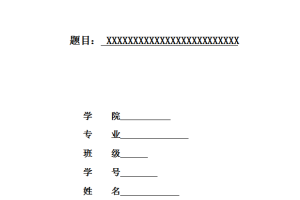单片机控制的PWM直流电机调速系统
随着时代的发展,数字电子技术已经蔓延到我们的生活,工作和研究的各个领域。及各种电器和机械系统中,由于直流电动机具有一个良好的启动,制动和调速性能,直流电动机速度控制系统已广泛地应用于各行各业,直流技术是最常用的脉冲宽度调制(PWM)DC转换技术,具有许多优良的特点,数字控制系统的硬件电路有着高度标准化,控制软件可以执行复杂的计算,可以从一般的线性稳压器优化。
设计引入了AT89S51单片机的直流电动机调速系统。本文介绍了直流电机调速系统的意义,基于PWM直流电机调速的方法和单片机控制的基本工作原理,占空比的计算,实现的精确速度控制。主电路使用四个主键盘控制的AT89S51单片机将数据传输到微控制器,并产生一个脉宽调制信号,然后由L298传输至小型直流电动机。通过调试键就可以控制直流电机的启动,停止,方向和速度。整个系统的设计中,用大量的集成电路模块,大大简化了硬件电路,提高了系统的可靠性和稳定性。
关键词 单片机AT89S51;直流电机;脉宽调制;
The Design of PWM Controlled DC Motor Speed Control System Based On Single Chip
With the development of the times, digital electronic technology has spread to all areas of our life, work and study. And various electrical and mechanical systems, since the DC motor has a good start, braking and speed performance, DC motor speed control system has been widely used in various industries, DC technology is the most commonly used pulse width modulation (PWM ) DC conversion technology, has many excellent features, hardware circuit digital control system with a high degree of standardization, control software can perform complex calculations, can be optimized from the general linear regulator.
Design introduces AT89S51 MCU DC motor speed control system. This article describes the significance of DC motor speed control system, based on PWM DC motor speed control method and SCM basic working principle, the exact speed of the duty ratio is calculated to achieve control. The main circuit uses four main keyboard control AT89S51 microcontroller to transfer data to the microcontroller and generates a pulse width modulated signal is then transmitted to the L298 small DC motor. Through debugging keys can control the DC motor start, stop, direction and speed. Design of the entire system, with a large number of integrated circuit module, greatly simplifying the hardware circuit to improve the reliability and stability of the system.
Keywords SCM AT89S51, DC motor, PWM,
目录
1.3 国内外电机控制的发展及研究现状……………………….. 2
1.4 课题研究内容及目标………………………………….. 3
第2章 系统总体方案设计…………………………………….. 5
2.1.2 直流电机PWM调速原理……………………………. 6
2.3 总体方案比较与选择………………………………….. 8
2.4 电机调速控制模块方案比较与选择………………………. 10
2.5 系统各模块方案的比较与选择………………………….. 10
2.5.3 电机驱动芯片的选择…………………………….. 12
2.5.4 测速传感器的选择………………………………. 13
第3章 系统硬件设计……………………………………….. 15
3.4 LED显示部分……………………………………….. 19
3.6 复位电路和时钟电路…………………………………. 21
第4章 系统软件设计……………………………………….. 22
4.2 键盘扫描子程序…………………………………….. 23
4.3 PWM信号发生程序……………………………………. 25





